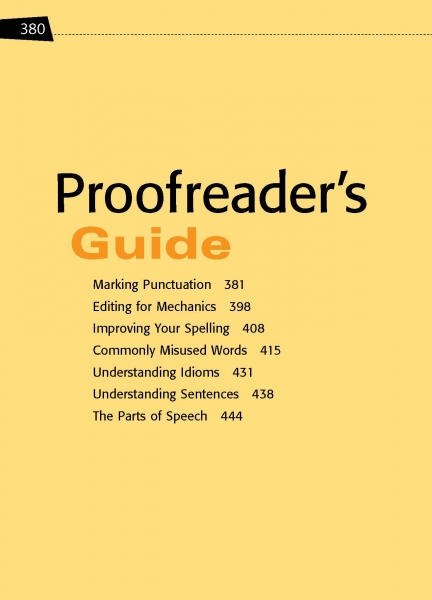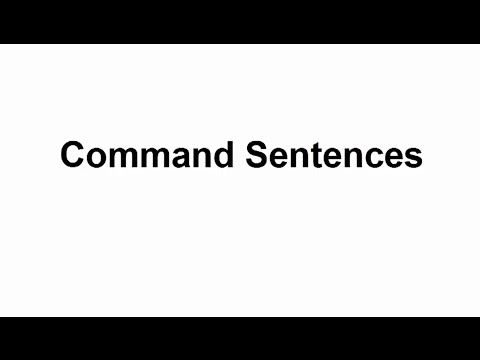Page 380 from

Start-Up Activity
The “Proofreader’s Guide” is a reference section for punctuation, mechanics, spelling, commonly misused words, idioms, sentence structure, and the parts of speech. It is designed to make the information easy to use. As students can see on page 381, the subject—periods—is at the top of the page. Down the left-hand margin, the rules for using periods are named. Then in the main part of the text, each rule is explained and examples are given.
Students should refer to this section whenever they have a question about using the language correctly. Such questions will naturally arise during the editing step of the writing process.
The key for you is to make sure that students are aware of all the information in this section, plus how to access it using the index. For practice, present students with the following “topic search” questions. Have them use the index to find the specific page numbers.
- On what pages can you find information about using abbreviations? (pages 405-406)
- On what page can you find information about capitalizing geographic names? (page 400)
- On what page can you find information about using commas in a series? (page 383)
- On what page can you find information about when to use its or it’s? (page 421)
- On what pages can you find information on noncount nouns? (pages 54 and 447)
- On what page can you find information about using the past continuous tense? (page 456)
Think About It
“Grammar is an ever-evolving set of rules for using words in ways that we can all agree one.”
—Patricia T. O’Conner

Start-Up Activity
The “Proofreader’s Guide” is a reference section for punctuation, mechanics, spelling, commonly misused words, idioms, sentence structure, and the parts of speech. It is designed to make the information easy to use. As students can see on page 381, the subject—periods—is at the top of the page. Down the left-hand margin, the rules for using periods are named. Then in the main part of the text, each rule is explained and examples are given.
Students should refer to this section whenever they have a question about using the language correctly. Such questions will naturally arise during the editing step of the writing process.
The key for you is to make sure that students are aware of all the information in this section, plus how to access it using the index. For practice, present students with the following “topic search” questions. Have them use the index to find the specific page numbers.
- On what pages can you find information about using abbreviations? (pages 405-406)
- On what page can you find information about capitalizing geographic names? (page 400)
- On what page can you find information about using commas in a series? (page 383)
- On what page can you find information about when to use its or it’s? (page 421)
- On what pages can you find information on noncount nouns? (pages 54 and 447)
- On what page can you find information about using the past continuous tense? (page 456)
Think About It
“Grammar is an ever-evolving set of rules for using words in ways that we can all agree one.”
—Patricia T. O’Conner




















